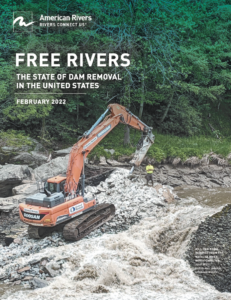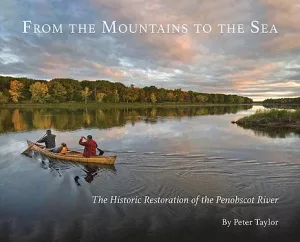Ca Rivers Deal With the D.C. Sillies – The River Advocate June 8, 2016 V6,#5
The River Advocate: June 8, 2016: Volume 6,Number 5
In this issue:
- Ca Rivers Day & the Capital River Awards
- ALERT: Help Stop HR8 – An Assault on America’s Rivers
- Plans to Dewater Upper South Fork and Silver Forks of the American River
- Get Involved – Join us for a Summer Adventure
- A Delta Playbook
- Draft Forest Plans find 870 miles of Streams Eligible for Wild & Scenic River Protection
- Help Wanted & Things Needed at FOR
- River Currents by Ron Stork
- Office space at FOR for rent in Sacramento
 Capital River Awards & California Rivers Day
Capital River Awards & California Rivers Day
Eric Wesselman, Executive Director
Over 20 organizations and almost 50 river advocates came together on May 18th in Sacramento at the state capitol to raise awareness of rivers and advance real solutions to California’s water woes for the second annual California Rivers Day.
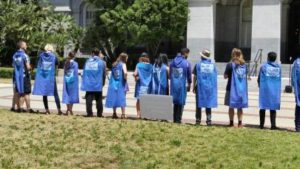 Groups and advocates attended in our Legislative Breakfast where they learned the nuts and bolts of legislation and how to effectively educate public officials. They then ventured to
Groups and advocates attended in our Legislative Breakfast where they learned the nuts and bolts of legislation and how to effectively educate public officials. They then ventured to
capitol to hold the California Rivers Fair and participate in face to face meetings with legislators and senior staff on rivers and river issues. At noon we held a press event and River Heroes – complete with capes spoke for their rivers and, politely, paraded through the halls of the capitol turning heads and making our rivers known!
Top of the list of issues was to advance a more refreshing approach to adding resiliency to ensure Water Now For California. This simple, straightforward mini-report outlines the path to cost effective and environmentally sensitive solutions that would yield almost 12 times the amount of new water for California than all of the proposed new and expanded dam projects combined. Just 5 solutions that would mean not only more water, but water that would available for use so much faster. FOR and our sister river organizations and other supportive environmental groups plan to continue to advance these solutions with reports on even more ways to improve California’s water picture to come.
After a full day at the capitol we gathered for the Capital River Awards at the Capitol Plaza Ballrooms to celibate the day and to honor two legislative heroes of California’s rivers Senator Ben Allen and Assembly Member Susan Eggman.
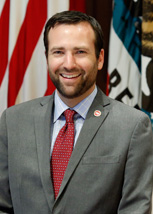 Senator Ben Allen authored SB 637, a landmark measure to protect California rivers and streams from environmentally hazardous suction dredge mining by requiring that water quality and human health impacts be evaluated before such mining is allowed to take place. This destructive form of mining used predominantly in the Sierra Nevada harms stirs up mercury and other toxic pollutants and turns fish habitat upside down. Elizabeth “Izzy” Martin, CEO of The Sierra Fund, was a chief proponent of the bill who noted “miners who use suction dredging are a vocal and organized band. It really required a senator who was willing to fight tirelessly for water quality and the public interest to successfully carry and pass this bill.” We at Friends of the River couldn’t agree more!
Senator Ben Allen authored SB 637, a landmark measure to protect California rivers and streams from environmentally hazardous suction dredge mining by requiring that water quality and human health impacts be evaluated before such mining is allowed to take place. This destructive form of mining used predominantly in the Sierra Nevada harms stirs up mercury and other toxic pollutants and turns fish habitat upside down. Elizabeth “Izzy” Martin, CEO of The Sierra Fund, was a chief proponent of the bill who noted “miners who use suction dredging are a vocal and organized band. It really required a senator who was willing to fight tirelessly for water quality and the public interest to successfully carry and pass this bill.” We at Friends of the River couldn’t agree more!
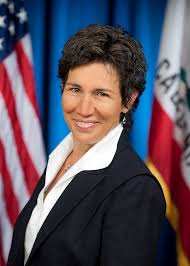 Assembly Member Susan Eggman is leading the charge to ensure the people of California have a voice on the proposed twin tunnels through the Delta. Her bill, AB 1713 which she introduced this spring, would prohibit construction of the tunnels unless expressly authorized by an initiative approved by California voters. This bill put a spotlight on the irreparable harm the tunnels would do to the Delta and upstream tributaries to benefit one part of the state at the expense of another. More than thirty years ago, voters had the opportunity to vote on peripheral canal and, thanks to her leadership, they should be given the same respect this time as well.
Assembly Member Susan Eggman is leading the charge to ensure the people of California have a voice on the proposed twin tunnels through the Delta. Her bill, AB 1713 which she introduced this spring, would prohibit construction of the tunnels unless expressly authorized by an initiative approved by California voters. This bill put a spotlight on the irreparable harm the tunnels would do to the Delta and upstream tributaries to benefit one part of the state at the expense of another. More than thirty years ago, voters had the opportunity to vote on peripheral canal and, thanks to her leadership, they should be given the same respect this time as well.
The Capital River Awards raises money to strengthen the voice of rivers at a critical time. Funds donated build FOR’s grassroots capacity to protect our rivers from deadbeat dams. This continues our efforts to target Interior Secretary Sally Jewell to protect rivers threatened by dams with an invitation to join us on an unforgettable river trip. We’ll also be working to engage local decision makers, spark media attention and invite the public out to create their own memorable river experiences.
Email us at info@friendsoftheriver.org to get in the loop for next year’s California Rivers Day or at capra@friendsoftheriver.org for the next Capital River Awards, both planned for May 3, 2017.
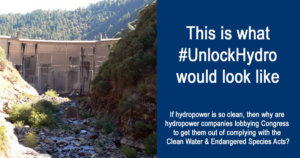 Help us stop a breathtaking assault on our nation’s rivers and the people who depend on them.
Help us stop a breathtaking assault on our nation’s rivers and the people who depend on them.
Tell your members of congress to stop H.R. 8!
H.R. 8 is a federal bill that would dramatically weaken the nation’s basic environmental standards as applied to hydropower dams across the country. Sponsored by the nation’s hydropower dam operators under the guise of “unlocking” or “modernizing” hydropower, H.R. 8 actually takes hydropower dam operations back decades. It creates a giant loophole for hydropower dam operators, so they are not required to protect fish, wildlife, or water quality. And the costs for cleaning up their mess? That would get passed on to taxpayers, like you.
With this bill, energy companies win; everyone else loses – river communities, municipal utilities, paddlers, and anyone who enjoys our public lands and rivers. Tell Congress to oppose this. The hydropower industry wants to be seen as clean and sustainable. But hydropower is the only renewable energy that drives species toward extinction. It needs to be done right to minimize the damage. And this legislation will result in dried up rivers, dead fish and wildlife, and destroyed recreational opportunities.
We agree that America’s energy picture is changing rapidly and that we need to update and modernize our energy infrastructure, but don’t let the hydropower industry take us backwards in time. Tell Congress to oppose this power grab by the energy companies. Take action now
PLANS TO DEWATER UPPER SOUTH FORK AND SILVER FORKS OF THE AMERICAN RIVER
By John Simpkin of American Whitewater, Special to the River Advocate
American Whitewater is actively monitoring a water storage project that the El Dorado Irrigation District is proposing on Alder Creek that will deeply impact the South and Silver Forks of the American River. Resurrecting a plan from the 1970s, the District has submitted the Alder Reservoir Concept for funding consideration to the California Water Commission. Under Proposition 1, which implements the Water Quality, Supply and Infrastructure Improvement Act of 2014, the Commission has the authority to allocate $2.7 billion in public dollars to water storage projects. If the District is successful in receiving partial funding for the $909 million Alder Reservoir project, a significant portion of the Upper South Fork American River drainage would be de-watered.
The project would involve 6.6 miles of pipeline and an 8.8 mile long tunnel, which could divert up to 180,000 acre feet of water in an average year. This would eliminate popular whitewater resources on the South Fork and Silver Forks of the American River, including:
South Fork American River – Lover’s Leap (IV-V), Kyburz (III-V), Riverton (III-IV), Golden Gate (V+)
Silver Fork American River – Dugald Bremner Run (V), Middle Run (III-IV), Lower Run (V+)
“This would be the death of all boating in the upper SFA drainage”, commented Jared Noceti, a long-time boater who grew up in the area. “This is huge. In a very bad way.”
American Whitewater will continue to track this project and work to keep the South and Silver Forks of the American River flowing! The river will need your voices…stay tuned for more information and ways you can take action! Learn more on this project and see a video of the Silver Fork American at: https://www.americanwhitewater.org/content/Article/view/articleid/32571/
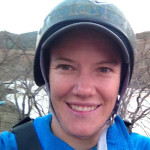 Get Involved!
Get Involved!
Toby Briggs, Engagement Coordinator
The summer holds new adventures as we welcome in another season, new River Advocates (River RATS) and new volunteers!
Get involved today!
Whether you are a seasoned volunteer or new to the FOR tribe—come join us for FUN this summer. Here’s how:
- Put Paddle to the Capitol on your calendar!—a multi-day adventure along the American River from Coloma to the Capital! Sign up for 1, 2 or all 4 days! (new event)
- Upper American—August 6th & 7th (whitewater rafting)
- Lower American—August 13th & 14th (canoeing/kayaking/rafting)
- Join us at a classic FOR BBQ Fundraiser—registration open online!
Jun 25-26 | July 16-17 | August 20-21
- Come out and canoe! Classes, paddles and outings available for all skill levels. Experience your rivers in a new way.
Check it out—more information here.
Thank you to our first class of River Advocates! They finish their fellowship on California Rivers Day (5/18). Here are just a few of their contributions over the last 5 months:
- Created engagement opportunities at Earth Day events, created film nights, Rotary Clubs, Sierra Club meetings and universities, plus shared about FOR at over 6 events.
- Helped coordinate the Antelope Valley/Site Reservoir Tour in April
- Transitioned the FOR website to a new platform.
- Connected 125 Bay Area high school students with water justice issues.
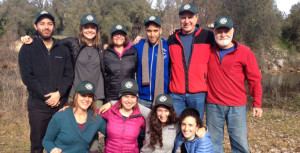
Please welcome 7 new River Advocates for Summer 2016! Brett, Bryan, Eric, Holly, Jeremy, Kathryn and Lindsay. Each of these talented and motivated folks will be on the river this summer sharing about FOR’s work. Come meet them on a canoe or rafting trip!
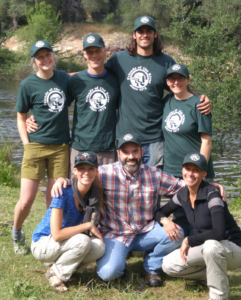
We are working to build a strong FOR volunteer community. Tell us how you would like to get involved by emailing Toby Briggs, Engagement Coordinator. What do you have to share in time, talents, passion?
 A Delta Playbook
A Delta Playbook
Ron Stork, Policy Director
It’s sometimes hard to follow the complex dance of the proposed Delta tunnels (now called the California Water Fix). So in the interest of a little more clarity, here’s some much abbreviated highlights.
The Kickoff
In order to construct the Delta tunnels, the California Department of Water Resources and U.S. Bureau of Reclamation need permission to persuade the State Water Resources Control Board to add the tunnel entrances to their existing “point of diversion(s)” for their big pumps that deliver water to the south state and some bay area communities.
The applicants will need to demonstrate that the water-right change does not cause harm to any other legal user of water. And environmentalists assert that court cases such as Audubon’s famous Mono Lake case require that the Board consider harm to the “public trust” in making its decision.
The Board has scheduled hearings that cover each of these issues separately.
The Delta Team
Delta-area farmers and cities have long claimed that south-state pumpers (the exporters) are pumping water not surplus to the needs of riparian-rights holders in the Delta (i.e., they’re hurting higher priority (riparian) users in the water-rights pecking order) and that the exporters are also pumping water needed in the watersheds (areas of origin) where the export projects gather their water.
These issues have a water-rights theme that can be summarized as “pumping water that doesn’t belong to them.”
The Delta folks are concerned that the tunnels will mean less fresh water in the Delta because of the upstream diversion, and that more water will be pumped and water quality conditions in the Delta degraded — regardless of any assurances that may be given today.
This “riparian versus project water,” “no harm,” and “adequate assurances” themes are complex to sort out and something that the Board will try to figure out — or avoid figuring out as much as they can. That story has yet to play out.
The Sacramento Valley Folks
The Sacramento Valley is the main place where the water the exporters pump comes from. The exporters tell folks in the Sacramento Valley not to worry because the change in “place of use” doesn’t change the water rights of folks in the Sacramento Valley or the state’s “area of origin” protection statutes.
That’s true, but that’s not what many people in the Sacramento Valley are concerned about: they care about having enough water for their farms, cities, iconic fisheries, and scenic landscapes.
Court decisions have made it clear that “area of origin” protection does not apply to how federal and state managers allocate water in the giant Central Valley Project (CVP) or the State Water Project (SWP) that together control most of the developed waterways of the Sacramento Valley. A water contractor with the same priority in one part of the CVP or SWP should have the expectation that it will be treated equally with any other contractor with the same priority (shortage provisions) — or at least that it is within the CVP and SWP’s discretion to try to achieve that equality.
Beyond that, the state and federal projects have substantial discretion on where they decide to store their water.
However, geographic circumstances are recognized by the courts as a legitimate reason why contractors may have different circumstances (i.e., deliveries or delivery reliability). For example, because circumstances in the Delta tend to constrain exports in some years, in these years and on average, the big Folsom, Oroville, Shasta, and Trinity CVP and SWP Reservoirs tend to be higher than they would be with the tunnels in place and the export projects less constrained.
With the tunnels, that water would be in San Luis Reservoir, SWP reservoirs on the way to L.A., and in the salty and seleniferous fields of the west side of the San Joaquin Valley (plus Kern County). In other words, it’s geography that control many real-world decisions since within the CVP and SWP service areas the water belongs to the United States and the State of California regardless of where an individual contractor may be.
The existential problem for the north state is just that. Neither applicant for the Water Fix is prepared to keep water that belongs to them preferentially in the north state, improving water-supply reliability and environmental quality there.
The tunnels will change geographic circumstances. Shortages will be more frequent in the north because that water will be in the south.
That is harm.
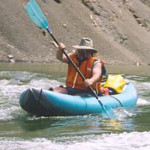 Sierra Nevada Forest Plans Will Determine Fate of Our Wild Rivers and Streams
Sierra Nevada Forest Plans Will Determine Fate of Our Wild Rivers and Streams
Steve Evans, Wild Rivers Consultant
The U.S. Forest Service has released for public review and comment draft management plans for nearly 4 million acres of public lands in the eastern and southern Sierra Nevada. The draft plans for the Inyo, Sequoia, and Sierra National Forests address many different land and resource management issues, including the identification of rivers and streams eligible for Wild & Scenic River protection.
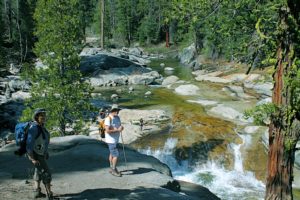 The good news is the Forest Service has just completed in the draft plans the first comprehensive Wild & Scenic River inventory in the eastern and southern Sierra, identifying nearly 870 miles of streams eligible for Wild & Scenic River protection. The Sierra Forest identified an astounding 633.5 miles of eligible rivers and streams, while the Inyo found 160 miles to be eligible. The Sequoia identified only 76 eligible miles.
The good news is the Forest Service has just completed in the draft plans the first comprehensive Wild & Scenic River inventory in the eastern and southern Sierra, identifying nearly 870 miles of streams eligible for Wild & Scenic River protection. The Sierra Forest identified an astounding 633.5 miles of eligible rivers and streams, while the Inyo found 160 miles to be eligible. The Sequoia identified only 76 eligible miles.
The free flowing character and outstanding natural and cultural values of the eligible rivers and streams included in the final plans will be protected administratively by the Forest Service pending future legislative action by Congress.
Streams eligible for Wild & Scenic protection include some of the most iconic waterways in the eastern and southern Sierra Nevada, including Lee Vining Creek, Hot Creek, and Lone Pine Creek on the Inyo Forest; the Little Kern River and lower Kern River on the Sequoia National Forest; and the unprotected segment of the Kings River, upper Dinkey Creek, and much of the San Joaquin River on the Sierra Forest.
However, the Forest Service either didn’t assess or found ineligible some key streams in the draft plans, including Dexter Canyon on the Inyo Forest, Salmon and Trout Creeks on the Sequoia Forest, and lower Dinkey Creek on the Sierra.
 Wilderness protection, including roadless lands in Wild & Scenic River watersheds, is also a key issue addressed in the draft forest plans. Unfortunately, the Forest Service recommends in its “preferred” Alternative B no new Wilderness on the Sierra and Sequoia Forests and only a modest 37,000 acres of Wilderness on the Inyo – about 2.5% of the 1.5 million acres of potential wilderness inventoried on all three forests.
Wilderness protection, including roadless lands in Wild & Scenic River watersheds, is also a key issue addressed in the draft forest plans. Unfortunately, the Forest Service recommends in its “preferred” Alternative B no new Wilderness on the Sierra and Sequoia Forests and only a modest 37,000 acres of Wilderness on the Inyo – about 2.5% of the 1.5 million acres of potential wilderness inventoried on all three forests.
The agency is recommending 743,076 acres of Wilderness in the more conservation oriented Alternative C. But even this more expansive alternative leaves out key areas, including roadless portions of the Kings and North Fork Kern Wild & Scenic Rivers. Protecting these watersheds will preserve the water quality and biotic integrity of these important rivers.
The 90-day public comment period on the draft plans has begun and comments are due by August 25, 2016. To ensure strong protection for Wild Rivers and Wilderness in the final forest plans, advocates must attend public meetings, submit comments supporting Wild Rivers and Wilderness, mobilize their friends to get involved, and get out their and explore these threatened wild places before its too late.
Friends of the River will email alerts for each forest in the coming months. If you live in the vicinity, we urge you to attend upcoming public information meetings about the draft plans. If you attend one of these meetings, be sure to mention that you support all 870 miles of eligible Wild & Scenic Rivers and Alternative C in regard to Wilderness recommendations, with some rivers and areas added (see above).
Meetings in June include:
- June 13, 2016, 6-8PM – Mammoth Lakes Cerro Coso Community College, 101 College Parkway, Mammoth Lakes, CA.
- June 14, 2016, 6-8PM – Cerro Coso Community College Eastern Sierra Campus, 4090 W Line Street, Bishop, CA.
- June 15, 2016, 6-8PM – Sequoia National Forest Supervisor’s Office, 1839 South Newcomb Street, Porterville, CA .
- June 16, 2016, 6-8PM – Clovis Memorial Veteran’s Hall, 808 4th Street, Clovis, CA.
- June 22, 2016, 6-8PM – California State University Northridge, University Student Union, Thousand Oaks Room, 18111 Nordhoff Street, Northridge, CA.
- June 23, 2016, 5-8PM – El Pueblo Historical Monument, 125 Paseo de la Plaza, Pico House, Los Angeles, CA.
- June 29, 2016, 6-8PM – Fort Mason, Gallery 30, 2 Marina Boulevard #308, San Francisco, CA.
For more information, please contact Steve Evans, Friends of the River’s Wild Rivers Consultant at sevans@friendsoftheriver.org or call (916) 708-3155. To review the Forest Service’s draft Forest Plans and EIS, as well as for the full schedule of upcoming public meetings, visit:
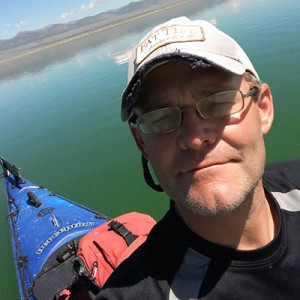 Help Wanted & Things Needed
Help Wanted & Things Needed
Johnnie Carlson, Operations Director
It takes a lot of friends to save rivers and we would love to welcome more friends into a love of rivers. Spreading the word means getting out there and having the right tools – if you can help write, table, share photos, organize a house party, or donate an item on our wish list – send an email to jcarlson@friendsoftheriver.org.
Web/Writing
Help build and/or write website content or write for FOR’s Headwaters newsletter. Later this summer we will be rolling out new content on our site, building river pages, and looking for local river stories to share with a wider audience.
Photos
We are always in need of photos of California rivers and photos of people enjoying those rivers. Whether it is spring time blooms along the river, winter scenes, or the fun of summer – send photos to share to FOR to info@friendsoftheriver.org.
Outreach Volunteers
We are looking to get more people involved in river campaigns in the Fresno, Chico, Redding, and Merced-Mariposa-Yosemite area. What we need are local volunteers to find and table at local events and activities and possibly to host a River House Party in your area.
FOR’s Wish List:
Working Power Point Projector
Used, but working MAC laptop
New or like new PFD’s and whitewater helmets
Used canoes and whitewater rafts in working condition – they need not be pretty
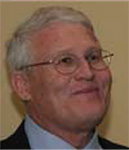 River Currents
River Currents
By Ron Stork, Policy Director
Not-So-Silly Season Here
This is an election year, so members of Congress have been spending much of their time in their own election campaigns — or the elections of others. But they also have some bills they would like to pass, and they don’t have a lot of time left to do it.
One of those bills is another Energy bill. The Senate bill (S. 2012) has reflected the interests and prejudices of its members. The House bill does as well. The result: trouble.
These are big bills, and there is much to say about them, but let’s concentrate on some obscure sections that affect rivers and the way we manage them.
H.R. 8, on the House side, includes PG&E’s (Northern California’s Pacific Gas and Electric Company’s) effort to consolidate the power of the Federal Energy Regulatory Commission (Commission) to control decisions related to power-producing dams not owned by the federal government. As a result, the power of tribes, states, and federal natural-resource and land-management agencies would be diminished.
That would be a bad thing.
These agencies have shouldered considerable responsibilities to protect public lands and waters, water quality, recreation and recreational fisheries, and threatened and endangered species. PG&E and many other dam owners haven’t liked the way these agencies have taken their jobs seriously and want more power to rest in the much more dam-owner-friendly Commission.
PG&E persuaded California Representative Jerry McNerny (D-Stockton) to carry their water for them, the Republican House passed the bill, and the President’s senior advisors recommended a veto.
To make it even worse, in recent weeks, many provisions of Representative David Valadao’s (R-Hanford) “drought” bill were stuffed into H.R. 8. For those who haven’t been following closely, that bill attempts to commandeer water in the Delta and, for good or ill, bring that water home to Hanford and nearby fields overlying some of the overdrafted aquifers of the San Joaquin Valley. And locals have been overdrafting groundwater there for decades.
The House conferees include Californians Jeff Denham (R-Modesto), Doris Matsui (D-Sacramento), Lois Capps (D-Santa Barbara), and Jered Huffman (D-Huffman), the latter having spoke against the bill already.
Of course, every member of Congress gets to vote on the Energy Bill if it gets out of the conference. So it’s time to get out your pen or keyboard or telephone or I-pad and let your Representative or U.S. Senator know that you don’t want them voting for the provisions of H.R. 8 that disturb the existing protections for rivers by handing more control to the Federal Energy Regulatory Commission.
Check out our webpage on H.R. 8 for details, including who to write to. An informed and communicating public is the best defense we have for healthy rivers. Or you can jump right to our action alert and send your message now.
And Then There’s the California Legislature
California Rivers Day at the capitol, now in its second year, already has some traditions. In addition to bills of concern to individual participants, a few bills get highlighted by everyone as we trod along the floors of the capitol visiting legislators. And in the capitol, dominated by Democrats, you’d think we get some respect. Think again.
One of those bills, AB 1649, directs the California Department of Water Resources, which at least has some statewide river stewardship responsibilities, to develop a state water policy that gives priority to joint powers authorities (JPAs) to address surface storage (more dam) “needs.”
This provision is hardly needed since the $2.7 billion largesse in the California Water Bond can’t be tapped by the Department anyway, but given the local prejudices of the governing boards of JPAs, this provision in AB 1649 still sounds like scraping a fingernail on a chalkboard (for you younger people, that is pretty unpleasant).
More importantly, AB 1649 tries to influence the California Water Commission’s considerations on how to hand out billions of dollars to storage projects by declaring that the proposed Temperance Flat dam on the already tapped-out San Joaquin River and the proposed Sites offstream storage reservoir tapping the Sacramento River (a river without any stream-specific streamflow rules to protect it) “will meet statewide goals” and “provide benefits to the greatest public extent.” Lovely.
An obvious no-brainer for a no vote. Nope, only Assemblymen Gomez, Gordon, Levine, Mark Stone and Ting voted no. Not voting were Assemblymen Harper and Nazarian. 72 members of the California lower house voted yes!
Most Republicans and some Democrats were proud of their vote. The rest of the Democrats gave their vote to Rudy Salas (D-Bakersfield) to help him in his election bid. Nothing to be proud of.
So that means that this measure heads to the California Senate, where if the same dynamics prevail, there will be a similar vote. Time to tell your state senator that his or her mother would be ashamed if he or she cast her vote for AB 1649 and you can do so through our website.
It also looks like California Rivers Day at the state capitol needs to get bigger and better and held more often. The world is run by those who show up (well, money helps too), and it looks like we need to show up some more or at least be louder if we want respect.
But Back to the Congressional Sillies Again
We’ve got some big problems back in Washington D.C. House leaders, including Majority Leader Kevin McCarthy, are not only stuffing ugly river-nasty stuff into the Energy Bill but are likely to do so in any House companion to the Senate omnibus western water bill being put together by Senators Lisa Murkowski (R-Alaska) and Maria Cantwell (D-Washington).
That Senate bill is likely to feature Senator Feinstein’s “authorization” of any dam projects that the Secretary of the Interior wishes to “authorize.” It would also allow the Secretary provide for up to 25% of the construction costs of storage projects by others as a nice little Christmas present from Uncle Sam to otherwise deadbeat dams. It also would establish a Department of the Interior bank to compete with the private markets to loan money to get these dams going.
More dangerous is that provisions of Rep. Valadao’s and Senator Feinstein’s drought bills are being stuffed in the Energy and Water Appropriations bills. These are must-pass bills whether they are passed alone or in omnibus appropriations bills, the vehicle for many years now. They’re tough for a president to veto since they fund all or part of the federal government, from national parks to homeland security.
Presidents Jimmy Carter and Ronald Reagan would not be proud. These two tried to establish some fiscal discipline for federal water projects, and most thought that Ronald Reagan actually succeeded.
No more, though. Carter and Reagan’s heirs are heading back to the bad old days when approvals and funding for federal water projects was the business of the pork barrel, not a careful process that goes through expert review and vetting before Congress touches it.
Speaking of Silly, There’s the Elections
Donald Trump came to Fresno and told the adoring crowds there that there is no California drought, that it’s just those stupid environmental laws about a little fish.
Well, it is true that this year (a major drought year south of Sacramento but an average water year in the north state) the big export pumps couldn’t run flat out during the month or so when there was some reasonably big water in the Sacramento River. But it takes two rivers to keep the Delta working, and the San Joaquin River this year couldn’t do the job.
More illustrative were the two previous drought years. That drought hit north and south, and the pumps couldn’t run much because if they did they’d be sucking salt water and creating havoc for some fish there.
Earth to Trump, mother nature can’t be ignored no matter how sweet the rhetoric. She still bats last.
From the Not Silly Desk
Getting ready for conducting a briefing in the capitol and California Rivers Day does tend to focus the mind. This year it was trying to building some referenced fact sheets on the pending dam projects. After all, few in the legislature know much about them (other than they voted to stuff $2.7 billion in taxpayer money in the then budding California Water Bond to maybe finance them).
We decided to extensively reference the fact sheets so anyone could check our work, something that good journalists or legislative staff should do. Of course the endnotes (in small print) take up more space than the fact sheets themselves, but that’s life. Well, the one for Sites Reservoir doesn’t meet that standard, but Sites lacks a public draft feasibility report. That project is living in a halcyon world where it can be a reservoir for everyone and every thing — without having to demonstrate how it can.
Check the fact sheets out at the Friends of the River website. Right now we have fresh fact sheets on the proposed raise of Exchequer and Shasta Dams and the proposed Temperance Flat dam and Sites Reservoir.
As always, more fact sheets could and should be created for the deadbeat dams spawned or revived by the Water Bond. If you have some time and talents on this kind of communication, please contact the FOR office at info@friendsoftheriver.org. Public education should not be just a spectator sport.
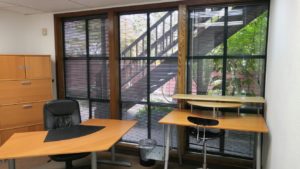 Need an office in Sacramento?
Need an office in Sacramento?
Johnnie Carlson, Operations Director
FOR is looking to sublet some offices, please pass this email out to your contacts in Sacramento or other locations who may have use for some prime office space near the state capitol. Thank you!
Friends of the River has 1 executive office within our suite (140 square feet – 10 x 14) for rent on a month-to-month basis for $300 or lease. Base rent includes electricity, janitorial, 1 dedicated parking space, use of conference room, landscaped courtyard, kitchen, fax, and wireless internet. Use of phone system, printers, scanner and color copier are negotiable. The office features floor to ceiling east-facing windows looking out on our gated courtyard and enjoys ample natural light.
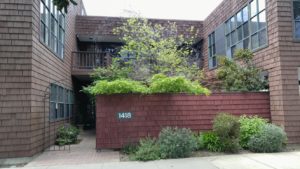 Our modern building is located with-in walking distance of downtown (10 blocks), the Capitol Park (6 blocks), dozens of restaurants and light rail. Our suite is alarmed, there are security cameras on our building, and the staff member responsible for our office lives one block away for convenient off-hour service needs. Month to month rate is listed, reduced rate for lease based on term length. First, last and security deposit required, terms are negotiable.
Our modern building is located with-in walking distance of downtown (10 blocks), the Capitol Park (6 blocks), dozens of restaurants and light rail. Our suite is alarmed, there are security cameras on our building, and the staff member responsible for our office lives one block away for convenient off-hour service needs. Month to month rate is listed, reduced rate for lease based on term length. First, last and security deposit required, terms are negotiable.
To arrange to view the offices or for other questions please contact Johnnie Carlson at (916) 442-3155 ext 211 or by email to jcarlson@friendsoftheriver.org
The River Advocate is published by Friends of the River. Got an item for the River Advocate – please email us at: info@friendsoftheriver.org.
The post Ca Rivers Deal With the D.C. Sillies – The River Advocate June 8, 2016 V6,#5 first appeared on Friends of the River.

